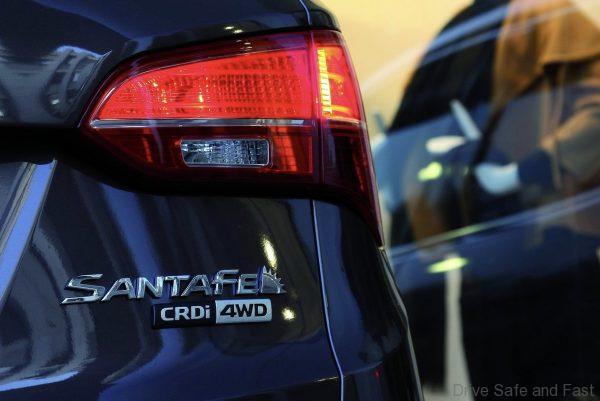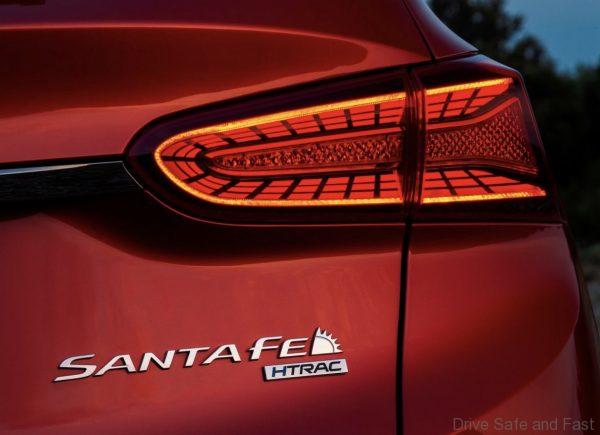Hyundai had gone from a youthful, inexperienced car maker to one of the largest and more mature players in the automotive industry. They were never shy about trying to introduce new cars in new segments. To this day, models like the Palisade show the company’s willingness to push itself further. Eventually these models make a name for themselves in the industry. The Santa Fe is an example of this, and today it turns 20. Let’s go through its journey step by step.
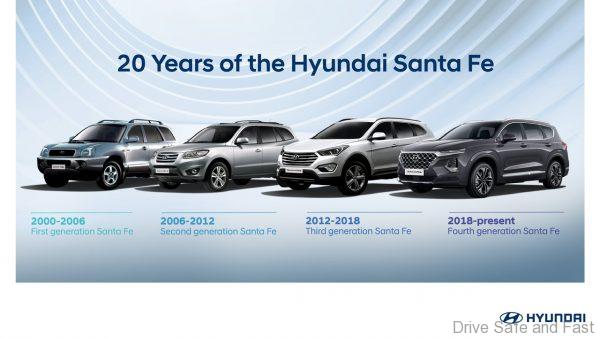
In the late 1990s, experienced Japanese manufacturers like Toyota and Honda already had soft-roader SUVs like the RAV4 and CR-V for customers. Hyundai went ahead and developed a larger SUV specifically to target European and North American customers.

By the year 2001, the Santa Fe had made its way into their showrooms across the world. It brought with it a few quirks of its own, including a logo of its that integrated a sun into the Santa Fe model name. This logo continues to be featured on the Santa Fe to this day.
Here’s Hyundai’s very own guide to each generation of the Santa Fe.
PRESS RELEASE
First-generation Santa Fe (2000-2006): the original best-seller
Hyundai introduced the Santa Fe to European audiences for the first time at the 2000 Geneva Motor Show. While subsequent generations became progressively premium over time, the very first Santa Fe was practical and appreciated for its functionality and reliability.
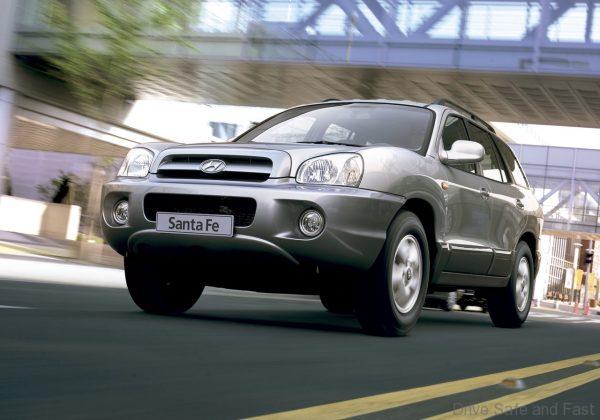
In 2001, not long after the first model was produced Hyundai had to ramp up production due to the overwhelming demand in the US.
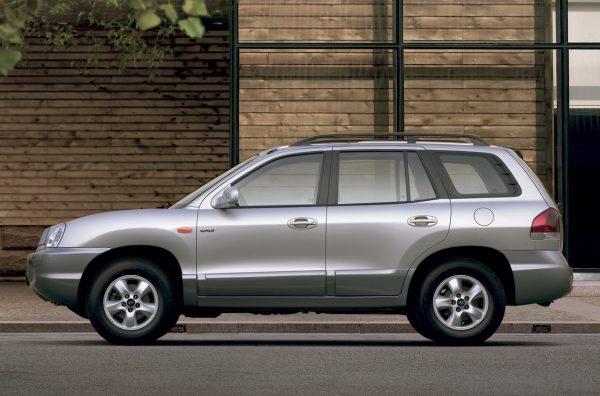
The first generation Santa Fe featured a rugged, yet refined look and was substantially longer and wider than many of its rivals in the segment, emphasising its practicality for off-road driving. The spacious interior offered enough room for up to five passengers, as well as ample cargo space. Meanwhile, its convenience features, which included air conditioning, a CD player, as well as electric windows, mirrors and a sunroof, were comprehensive for the time.
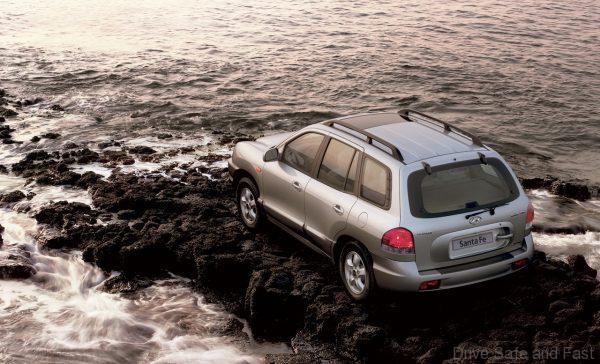
In 2003, in response to customer demand for even more driving performance, Hyundai upgraded Santa Fe with a more powerful engine and a computer-controlled four-wheel drive system.
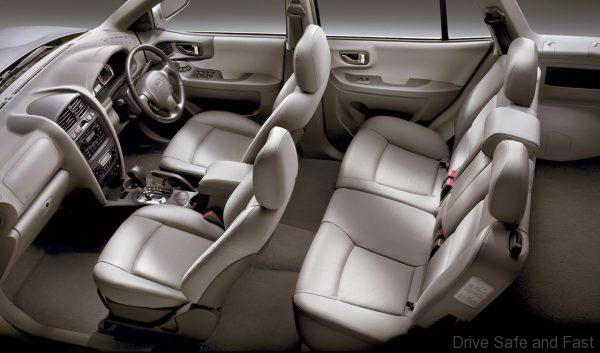
Second-generation Santa Fe (2006-2012): more power, more space, and an updated safety system
The second-generation Santa Fe was launched at the North American International Motor Show in January 2006. It featured a new 2.2-liter diesel-powered engine and an updated 2.7-liter gasoline-powered V6 while offering significantly improved handling and sportier engines to equip customers for a range of driving and weather conditions.
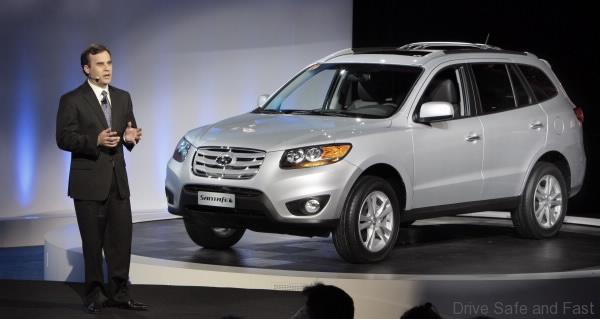
By the middle of the 2000s, design was becoming increasingly important to customers. Therefore, the Santa Fe’s successor model featured significant changes outside and inside the vehicle. Its exterior offered an assertive front grille, confident sculpted lines and finely detailed headlights. This contemporary look showcased how the brand’s design direction was evolving.
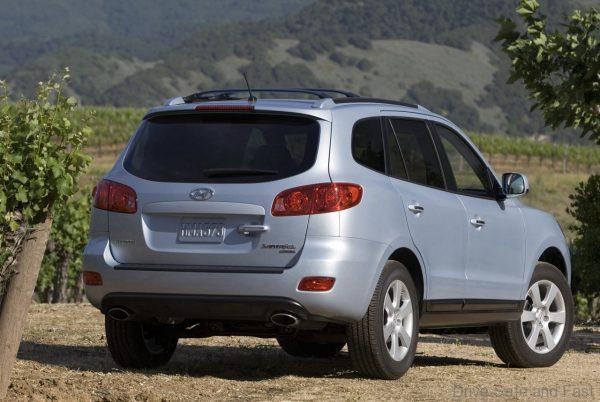
The interior utilised a range of soft-touch, high-quality materials and low-gloss surfaces to provide second-generation Santa Fe customers with a touch of luxury. This premium feeling was further emphasised by the blue backlighting which surrounding the model’s controls and switches, in combination with leather upholstery. Meanwhile, it offered more space than before, as for the first time, the option of adding a third row of seats was available, extending the five-seater to a seven-seater.

With customers of the time demanding increased safety features, the second-generation Santa Fe offered a series of extensive safety upgrades, which continued Hyundai’s leadership in standardising the industry’s most effective technologies.
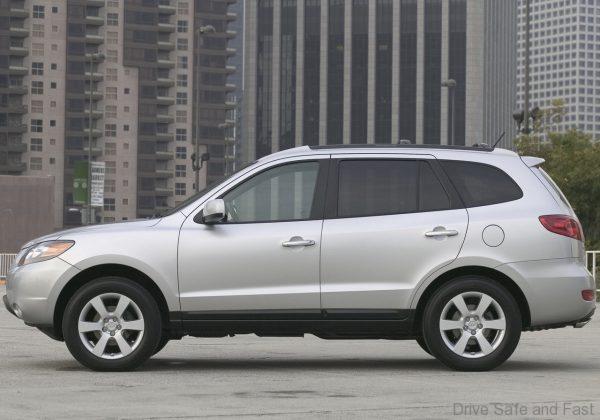
Electronic Stability Control (ESC), an anti-lock braking system (ABS), side-curtain airbags for all seating rows, a tyre pressure monitor, and active front head restraints now came as standard. Later, a premium version was added, which included a built-in navigation system, rear-view camera, cruise control and a light sensor.
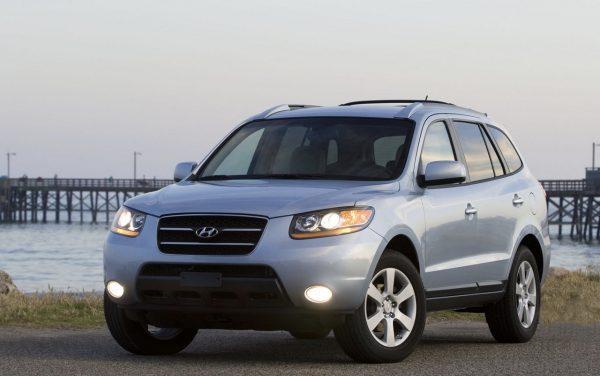
Third-generation Santa Fe (2012-2018): enhanced safety and improved connectivity
The third-generation Santa Fe was a big step forward for Hyundai, as it offered even greater comfort and quality, re-tuned engines and improved efficiency. In addition, it featured a new design direction called “Storm Edge”, which consisted of refined lines as well as bold and voluminous surfaces.
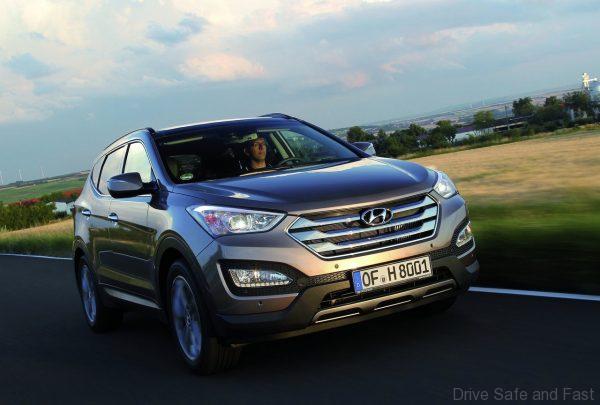
By adding a more emotional, muscular look and a wealth of premium features, the company demonstrated it was moving away from offering a purely functional SUV, and instead a sophisticated lifestyle vehicle.
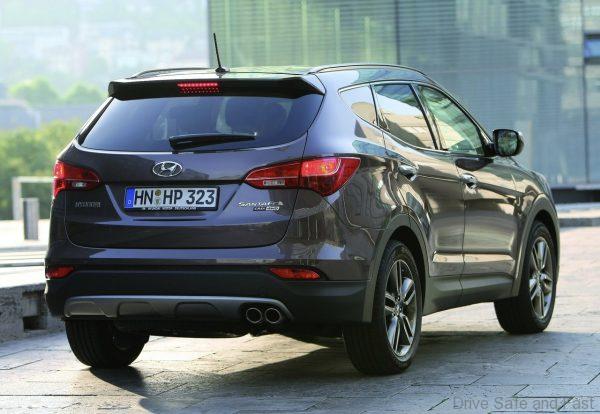
Available as both a sporty five-seater and a version with a long wheelbase offering three rows of seats for six or seven passengers, the third-generation Santa Fe also boasted a refreshed unibody crossover platform. The long version received a slightly differentiated design, including a unique hexagonal grille design, a new look for the B-pillar, optional 19-inch alloy wheels and flush dual exhaust tips. This illustrated that, in addition to maintaining the earlier model’s strengths of practicality, roominess and dependability, the new model looked modern and dynamic, making it an ideal proposition for to conquest new customers to the Hyundai brand.
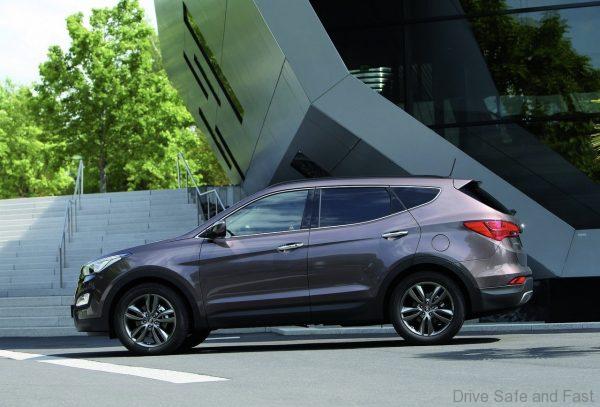
Both Santa Fe models offered a similar interior look, fully geared towards passenger comfort and functionality. In the early 2010s, advances in technology gave automakers the opportunity to improve their customers’ comfort and driving experience with a range of intelligent connectivity features. As a result, the third-generation Santa Fe offered an optional multifunction eight-inch touchscreen with navigation with a simpler and more intuitive user interface as well as enhanced voice recognition commands, while phone connectivity was also improved.
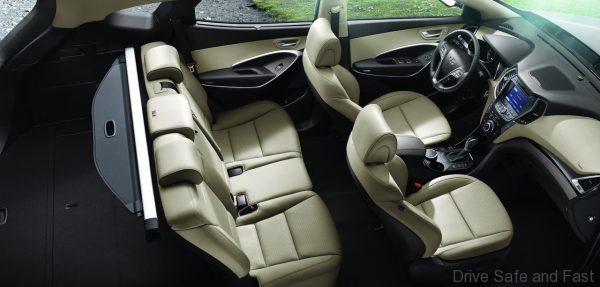
With the third generation Santa Fe, Hyundai reinforced its commitment to providing its customers with class-leading safety features. These included a premium braking package, which contained four-wheel disc brakes, an Anti-Lock Braking System (ABS) including Brake Assist providing maximum braking force when a panic stop is detected, and Electronic Brake-force Distribution (EBD) to automatically adjust the braking force to front and rear axles based on vehicle loading conditions. By offering these levels of state-of-the-art active safety technology, the third-generation model ensured improved protection for drivers, passengers and pedestrians.
Fourth-generation Santa Fe (2018-present): SmartSense safety features and a bold new design
Building on the success of its previous generations, in 2018 Hyundai introduced the fourth-generation Santa Fe. Its premium feeling is illustrated by its prestigious appearance, while it is equipped with the most advanced technology as well as best-in-class safety features and exceptional roominess.
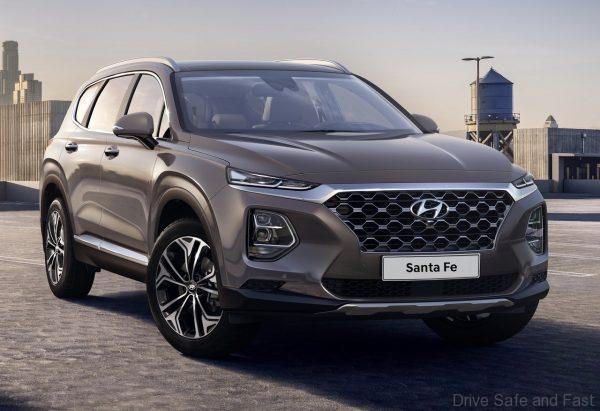
The elegant SUV model features a bold outward appearance with a wide, athletic stance. Hyundai’s signature Cascading Grille decorates the front, and the side is enhanced by sleek lines which stretch along the roof and from the headlights to the taillights. This reinforces the car’s status at the top of Hyundai’s SUV line-up. Inside, it is the roomiest Santa Fe yet, with 38 mm more leg room in the second row.
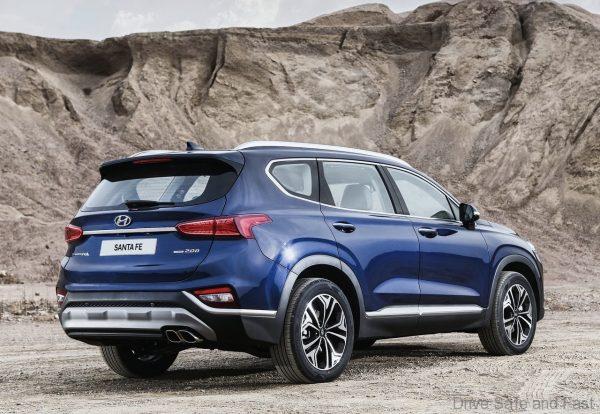
Equipped with Hyundai’s latest SmartSense technology, the fourth-generation Santa Fe is among the safest in its class, and it received the maximum five-star safety rating from Euro NCAP.
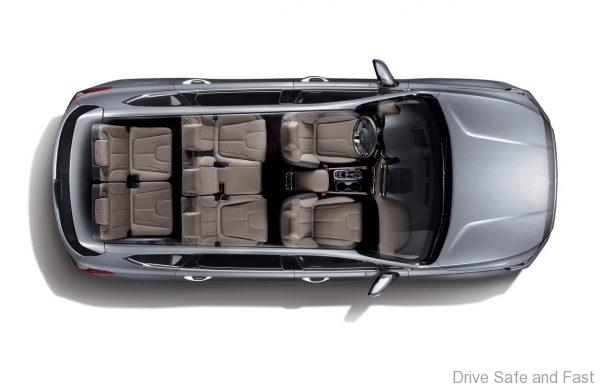
Hyundai demonstrates it continues to care for its customers by offering even more innovative features, including Hyundai’s in-house developed and industry-first Rear Occupant Alert, which uses an ultrasonic sensor to detect the movement of children or pets on the rear seat and alert the driver when leaving the car.
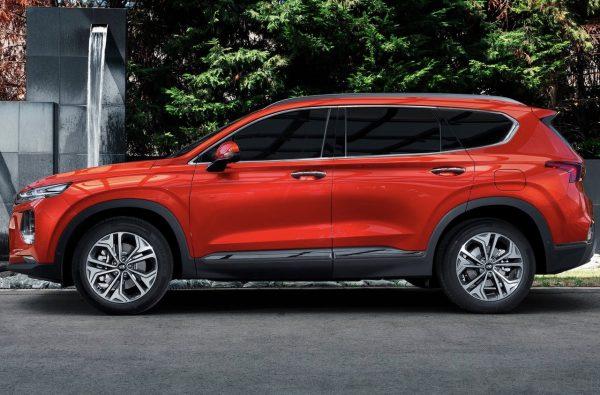
Another safety feature is Rear Cross-Traffic Collision-Avoidance Assist, which scans a 180-degree area behind the vehicle, warning the driver and applying the brakes if necessary to avoid collisions. Additionally, for the first time in a Hyundai, the fourth-generation Santa Fe features a full head-up display that projects relevant information onto the windshield to keep the view clear while driving.
The All-New Santa Fe features HTRAC, Hyundai’s advanced four-wheel drive system with an enhanced torque application depending on wheel grip and the speed of vehicle. It supports drivers in all kinds of driving situations, whether on snow, slippery roads or in regular road conditions, and enhances stability in cornering.
18 years after the introduction of the first-generation model, this powerful, elegant SUV has evolved to become Hyundai’s premium flagship model in Europe. The continuing improvements the Santa Fe has undergone over the past two decades demonstrate Hyundai’s commitment to developing quality products with the latest features for its customers. Further details on the enhanced fourth generation will be revealed in the near future.


